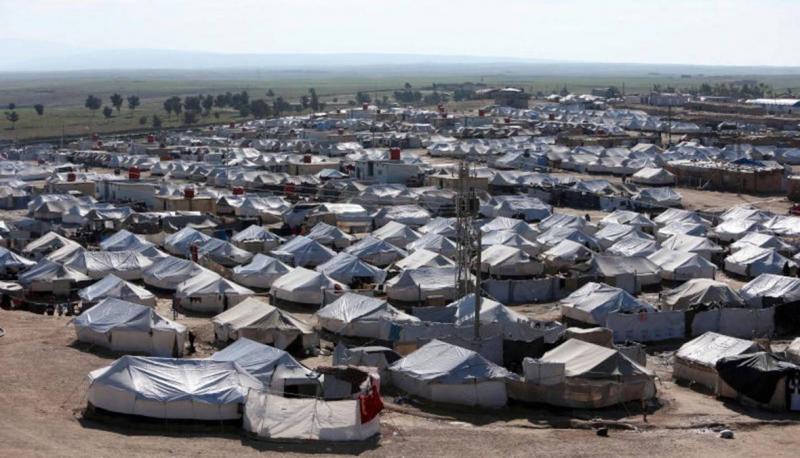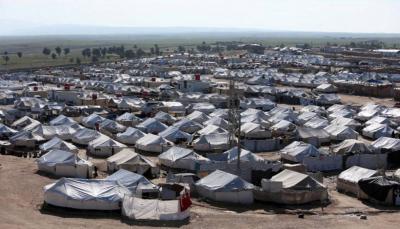About ten years ago, the ISIS organization announced the establishment of a "caliphate" over vast areas extending from Iraq to Syria. However, after consecutive battles on various fronts, Iraq declared its victory over the organization on December 9, 2017. About two years later, the Syrian Democratic Forces, a coalition of Arab and Kurdish factions supported by the U.S., conducted their final battles against jihadists, announcing the end of the "caliphate" on March 23, 2019. During and after the battle for Baghouz, ISIS's last stronghold in eastern Syria, Kurdish fighters transported thousands of families of ISIS members to Al-Hol Camp over several months.
### History and Population
Al-Hol Camp is located in northeastern Syria, near the town of Al-Hol, which has long served as a smuggling route between the two countries. The camp was established during the Gulf War in 1991 to accommodate Iraqi refugees and expanded later, particularly after the U.S. invasion of Iraq, according to a 2022 report by Doctors Without Borders. ISIS took control of Al-Hol in 2014, and the Syrian Democratic Forces regained it in 2015, marking one of their first significant victories following their formation that fall.
In 2016, the autonomous administration in northern and northeastern Syria reopened the camp to receive Iraqi refugees and Syrian displaced persons. However, since late 2018, the camp began to transform significantly. After the Syrian Democratic Forces launched their final assaults to reclaim Baghouz and its surroundings, the number of residents in Al-Hol increased from 13,000 to 70,000 within a few months, including 11,000 foreigners among women and children. As the battle progressed, the number of Iraqis reached 30,000, making them the largest group within the camp.
Following the conclusion of the battle for Baghouz in winter 2019, some countries began very slowly to repatriate their citizens from the camp, while foreign women and children were also relocated from Al-Hol to Roj Camp, a smaller, better-organized camp in the far northeastern Syria, which currently houses 2,500 people, more than 2,140 of whom are foreigners. According to the camp administration numbers from January 2024, Al-Hol Camp is home to over 43,000 Syrian, Iraqi, and foreign residents from at least 45 countries, with children constituting more than half of the population, totaling 21,500.
The camp is managed by a civil authority appointed by the Kurdish autonomous administration in northeastern Syria, and operates with agencies affiliated with the United Nations and international and local NGOs providing essential services in health, nutrition, water, sanitation, education, and protection. With support from the U.S. State Department, the international organization "Blumont" coordinates the services provided by humanitarian organizations, which includes receiving new residents. With support from the French government, they also manage infrastructure improvements and humanitarian assistance.
Security within the camp, which is surrounded by a fence and includes watchtowers, is the responsibility of the Syrian Democratic Forces and Kurdish security forces. The civil administration and security forces hold regular meetings with the U.S.-led international coalition concerning the camp, but American forces do not have a presence there.
As the camp became a refuge for families fleeing Baghouz, security forces imposed new restrictions, preventing residents from leaving except for medical permits. Registering residents presents a challenge for camp management, particularly since foreigners sometimes conceal their nationalities or claim other nationalities, according to camp officials. The autonomous administration does not recognize marriages involving minors, which are common in the camp, or second marriages, meaning many marriages in the camp remain unregistered, as do births resulting from them. The administration only registers marriages of minors once the girl reaches 18 years of age. As a result, the camp has become "filled with unregistered children," as stated by a humanitarian worker.




